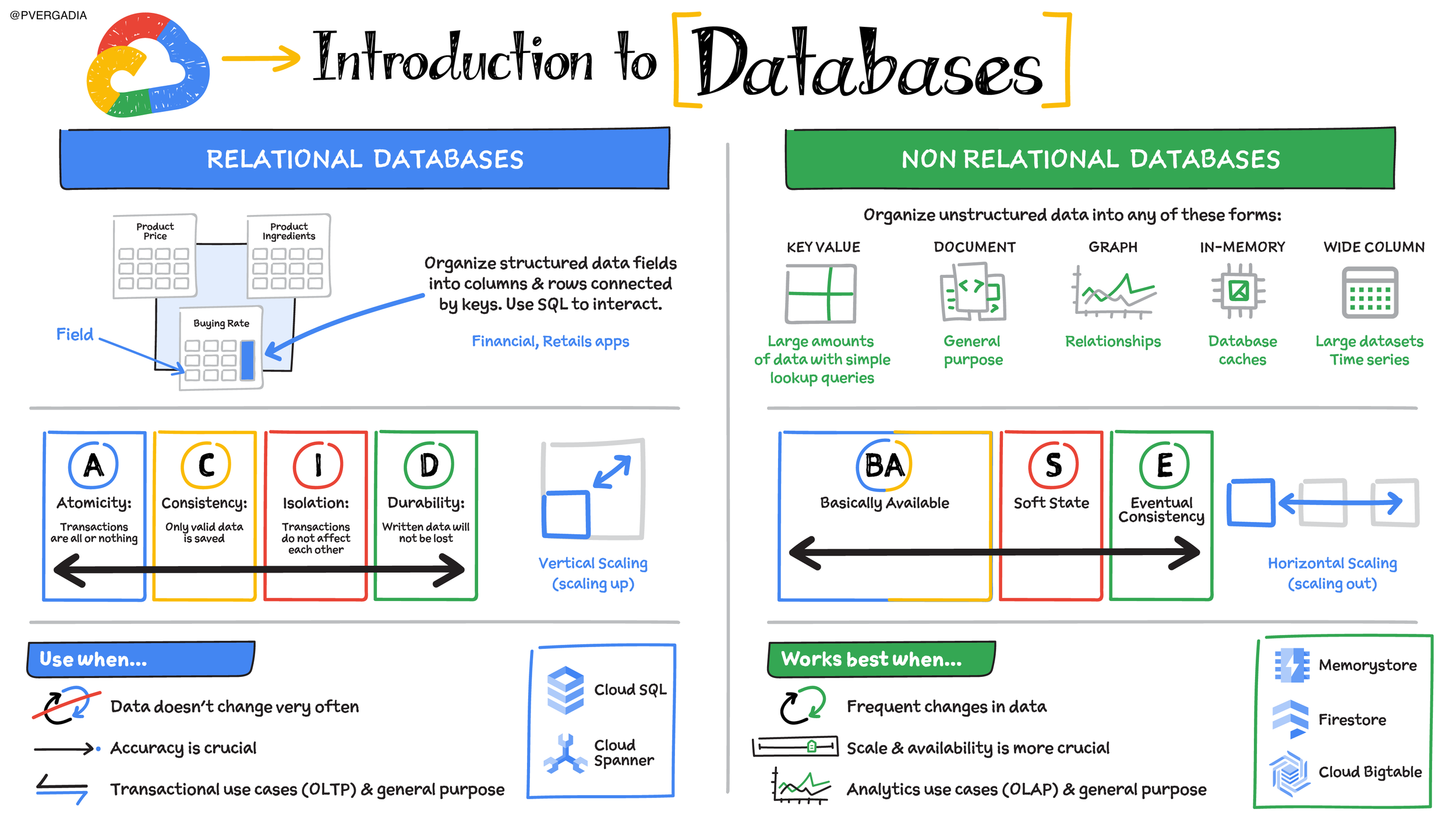
Behind the Scenes: Choosing the Right Database for Your App
Databases are the hidden libraries of your applications, storing information for easy retrieval. Imagine an online store – product details you see are stored in a database and displayed when you request them. But there are two main types of databases, each suited for different situations:
Relational Databases (SQL):
Think of these as organized filing cabinets with data stored in tables (like folders), rows (like sheets), and columns (like labels). This structure works well for data that stays consistent, like product information in a store.
You interact with them using SQL, a special language for querying data.
They guarantee ACID properties, ensuring data accuracy:
Atomic: All changes in a transaction happen together or none happen at all (like completing an entire purchase at once).
Consistent: The database remains structurally sound after a transaction.
Isolated: Transactions don't interfere with each other, ensuring data integrity.
Durable: Changes are permanent, even in case of system failures.
Because of these features, relational databases are ideal for applications requiring high precision, like financial transactions. Imagine a bank transfer – you want to ensure sufficient funds and an updated balance. While errors might be correctable, outdated data isn't.
Nonrelational Databases (NoSQL):
These are like flexible storage bins for complex, unstructured data, like documents containing product details, reviews, and images. They're perfect for situations where data structure changes frequently or large amounts of diverse data need organization.
Unlike relational databases, they're faster because queries don't need to search multiple tables, making them ideal for frequently changing data or applications handling many data types. Think of an apparel store – a NoSQL database could store information about shirts, including size, brand, and color, with the flexibility to add details like sleeve length later.
Their speed comes from these qualities:
Optimized: Designed for specific tasks (like key-value pairs or large datasets).
Horizontal Scaling: They can easily grow by adding more servers, unlike relational databases that might require upgrading a single machine.
Eventual Consistency: Data consistency is usually ensured eventually (like after a short delay), but Firestore offers strong global consistency immediately.
Transactions: Most NoSQL databases have limitations on complex transactions, but Firestore provides ACID transactions with strong isolation.
Because of these features, NoSQL databases are great for applications requiring high availability, reliability, and frequent data changes at a large scale. They can easily handle various unstructured data formats like documents, key-value pairs, and more.
